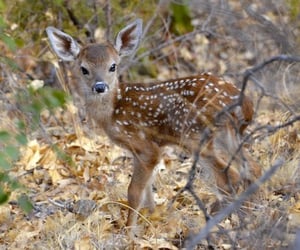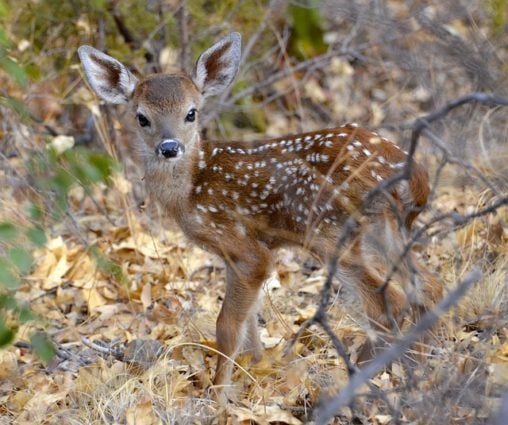This post is the first of three blogs that will discuss some key aspects of white-tailed deer herd management. Part two will discuss the specifics of buck management. Part three will finish with how to better manage for age and sex ratios in your white-tailed deer herd. These three topics combined will provide landowners and managers with basic information and tools to better manage deer herds on their lands.
Does Play a Critical Role in Deer Herd Management
We begin this series of blog posts with does because their health and abundance determine fawn survival rates and deer population sizes. More does equal more fawns. If populations rise above the natural carrying capacity of the habitat, conditions can become degraded for the whole population.
Food and space can become limited which could increase disease transmission, mortality from predation, mal-nutrition, and vehicular accidents. Removing does from overpopulated herds is the best way to maintain healthy populations sizes. For understocked herds, abstaining from harvesting does is the best way to increase population sizes. Stay tuned - we will discuss sex ratios in detail in the third installment of this topic.
Healthy Does equal Healthy Fawns
 Does are the foundation of your white-tailed deer herd. Maintaining their health and age structure is just as important for buck management as managing the bucks. If does are not healthy, their offspring will have a diminished chance of survival. This mortality due to unhealthy does can negate desired breeding success with big bucks. In contrast, does with proper body conditions prior to, during, and after the rut are more prone to having twins and triplets reach maturity. First time mothers will often only have one fawn, older does (1.5 years +) will commonly have twins.
Does are the foundation of your white-tailed deer herd. Maintaining their health and age structure is just as important for buck management as managing the bucks. If does are not healthy, their offspring will have a diminished chance of survival. This mortality due to unhealthy does can negate desired breeding success with big bucks. In contrast, does with proper body conditions prior to, during, and after the rut are more prone to having twins and triplets reach maturity. First time mothers will often only have one fawn, older does (1.5 years +) will commonly have twins.
Doe Nutritional Needs
If food is limited while mothers are lactating, their body condition can decline and one or both twins could be lost. Does require excess protein and sodium in the summer months when they are lactating. Changing supplemental feeders from corn to protein and providing salt and mineral blocks after hunting season will help provide excess nutrition bred does require to feed their young in the summer.
Browse species should be maintained year-round for doe diets. Browse is the most stable food source for deer and consists of young woody vegetation, twigs, shoots, buds, and leaves. Often land managed for aesthetics is denude of browse and cover for deer. What looks appealing to us is hardly ever optimal for wildlife. Contact me prior to land clearing projects for tips and strategies for merging wildlife management and aesthetics.
Do not overlook or neglect doe management when formulating your white-tailed deer herd management strategy. Big buck management typically eclipses all other considerations, but it all begins with healthy moms! Remember, if mom is not happy, no one is happy!



